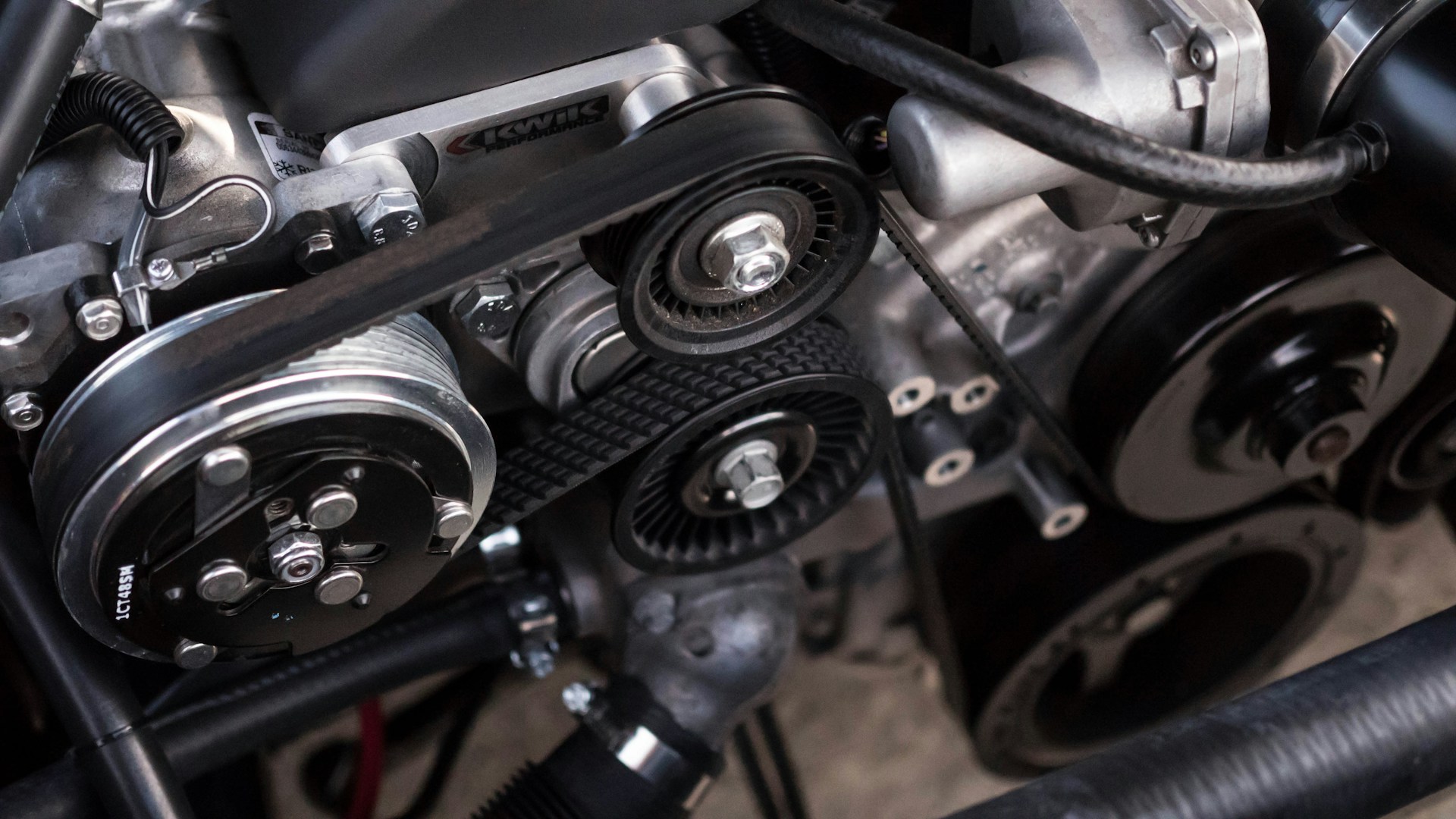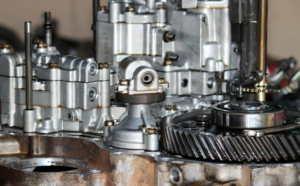Most of us have heard the screeching sound from someone’s car indicating they have a belt problem. But have you ever wondered, “What does the fan belt in a car do?” Or “What is the function of the timing belt anyway?”
If so, this post is for you. We explain the functions of different car belts. And we help you identify when you may need to have a belt tightened or replaced.

Photo by Chad Kirchoff on Unsplash
How Many Belts Does an Engine Have?
It might surprise you to know that not all vehicles have the same number of belts. The make, model, age, and size of the car or truck, as well as the engine configuration, influence how many belts it has.
As automotive technology has improved, some belts have been done away with. You might have one long serpentine belt, or your vehicle could have several accessory belts too. We’ll discuss the possibilities below.
Meanwhile, it’s worth noting that the material that car belts are made of has changed too. Older belts were made of neoprene rubber, cotton, and Kevlar. However, today automotive belts are made of ethylene propylene diene monomer (EPDM) rubber. You can usually get about 160,000 kilometres out of newer belts, compared to about half that previously.
What Do Belts Do in a Car?
When your mechanic is working on your vehicle, here are some of the belts they may encounter. Remember, your car or van may have some of these but not all. And there is some overlap between the functions of these belts and their nomenclature.
Timing belt
Your timing belt is the most important belt in your vehicle. It keeps the crankshaft and the camshaft in sync. These parts move the engine’s pistons and open and close its valves. They must move in a carefully choreographed manner for your engine to function properly. In fact, if they aren’t moving in a perfectly timed sequence, they can run into each other, causing engine failure.
You won’t likely see your timing belt at a glance under the hood. It’s hidden under the timing cover. It will probably need to be replaced sometime after 100,000 kilometres, depending on your manufacturer’s recommendations and wear.
In some late model vehicles, the timing belt has been replaced by a chain. Also, the timing belt in some models also turns the water pump (see more below).
Fan belt
This belt powers your cooling system components, including the:
- Water pump
- Radiator fan
- Air conditioning
If the fan belt malfunctions or breaks, your vehicle could overheat.
Serpentine belt
Sometimes the serpentine belt takes over the function of the fan belt. Actually, the serpentine belt can cover what used to require multiple belts. Serpentine belts have become longer, wider, and more reliable than in decades past. They have better ribbing now, too, to help them stay in contact with the surfaces of the parts they interact with.
Serpentine belts take their name from their serpent-like shape. They twist, turn, and wind their way through the engine, going over and under various gears and wheels.
Your serpentine belt should last at least 100,000 kilometres. After that, it’s wise to have it checked during subsequent inspections.
Accessory belts (V belts or drive belts)
If your vehicle is older (especially if it’s a vintage model), you may have a number of different accessory belts doing the work of what is now more commonly performed by a single serpentine belt.
Accessory belts are sometimes called V belts because of their V-shaped profile. They are also known as drive belts because they drive various components of the car.
You’ll often find accessory belts used for:
- Alternators
- Power steering
- Water pumps
- Air conditioning
Signs Your Car Needs a New Belt
Your mechanic will check belts as needed during inspections and repairs. But what if you have a belt problem between appointments? Here are some signs that you may need a new belt:
- Visible signs of wear, such as fraying, cracking, or obvious overstretching
- Squealing or loud repetitive screeching under the hood
- Difficulty starting or charging the battery after a jump (alternator failure)
- Cooling system problems or engine overheating
- Failure of accessory components, like power steering or air conditioning
Can You Tighten a Timing Belt? Or Must It Be Replaced?
There’s a lot of advice online about DIY tightening and replacing car belts. However, we don’t recommend doing this. Because some belts affect the integrity of your engine, like the timing belt, executing the job incorrectly could ruin your vehicle.
Also, some serpentine belts nowadays come with autotensioners. These devices automatically adjust the belt tension for its demands at the moment. You shouldn’t mess with these, as you can cause further damage or even void your warranty. Your Langley, BC mechanic is the one who should decide if a belt should and can be tightened or if it is time for a replacement.


